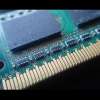5 Tips for Maintaining a Clean Work Environment
By Zoë Wright, March 2020
Regardless of whether or not you work from a centralized or decentralized office, maintaining a clean work space is crucial to keeping your business healthy - literally. Not only does a clean work environment help keep you and your employees physically healthy, it also increases productivity, according to Princeton University Neuroscience Institute. Many of us already understand the value of a clean work environment, though, it's the part about how to keep a clean work space that trips us up. So, here are 5 tips to help you maintain that clean and productive office of your dreams.
1. Clean Your Tech Gear Regularly
Did you know that the two items you most likely touch more than anything else during your work day - your keyboard and your mouse - can have as many as 6x more germs on them than a toilet seat? Yeah, we were pretty disgusted, too. This is why it's so important for everyone in the office to clean their tech gear regularly. We have an in-depth how-to article posted on our website blog if you're at a loss as to how to do this. But, take our advice and clean more than just your keyboard and mouse, too. Think of all the things you touch while at your desk - your cell phone and or landline, lights, writing utensils, tablets, chargers - you name it! Give all those items a muchneeded clean. We suggest cleaning your gear at the end of each work week, at minimum.
2. Keep Your Personal Desk and Work Area Ultra-Clean
Okay, maybe not "ultra" clean - we're all human, right? But, by setting the example for your office staff by always having a clean desk and work area, you're subconsciously encouraging them to do the same. This will lead to a cleaner office space overall, which everyone will benefit from. Furthermore, pay mind to not only declutter your desk and office space (which is very important for your own mental health), but to also actually clean your space, especially when your staff can see you doing so. Having a clutter-free zone is great for anxiety-free work, but germs can still accumulate on all those surfaces. So, whip out those cleaning supplies and have yourself a cleaning party! And if someone in your office is truly a messy worker, maybe consider prompting them with a gift of some disinfectant wipes. It's worth a shot, right?
3. Avoid Eating at Your Desk
Hey, we get it, we're guilty of it, too. In fact, one of our workers has a desk drawer full of snacks (it's me). And, honestly, sometimes you just feel like you have to eat at your desk because the day is so hectic. But, the more you eat at your desk, the more crumbs and germs will accumulate there. Whenever possible, avoid eating at your desk, and prompt your staff to do the same by encouraging them to get some fresh air and change in scenery when they eat. It's honestly just healthier for our brains to do this, anyways. And on those days where it just can't be avoided, always make sure to clean up after yourself and disinfect your desk and equipment afterwards.
4. Get Everyone Some Hand-Sanitizer
Anti-bacterial liquid is your friend, and, not that I spend my work time shopping or anything, but a certain fragrant store always has little bottles on sale in all sorts of scents. Why not be everyone's favorite boss and buy everyone in the office some? Just remember, hand sanitizer is great for all those in-between times (or when you don't want to be rude to the person you just shook hands with), but it doesn't replace actually washing your hands. Visit the CDC's website for a refresher on how to properly do this, and when if you're not sure.
5. Hire a Professional Cleaning Company
Not every business is able, or even wants, to do this, but it's always a good idea to bring in someone who really knows what they're doing, whenever possible. Even if it's just a few times a year, it may be worth it. And if it's just not possible, do everything possible to encourage your staff to take pride in their work space by cleaning up after themselves and each other. It's not fun, and no one likes doing it, but it's part of being a team.
The Do’s and Don’ts of Cleaning Your Earbuds and Accessories
By Zoë Wright, March 24, 2020, 2 PM EST
To be perfectly blunt, your earbuds are gross. I can say this with near certainty because, in a recent BuzzFeed survey, 49% of people (103.5K) said they only clean their earbuds when they’re visibly dirty – 34% (71.7K people) said the “literally never” clean them. That’s about 83% (175.2K people), of earbud users who aren’t cleaning their earbuds on a regular basis.
Many of us may not think that this is a big deal – it’s just earwax on those buds, we tell ourselves, and that’s not a big health threat. But we’d all be wrong. Headphones and earbuds can collect sweat, dirt and bacteria, which can lead to harmful infections if the conditions are right. What’s more is that headphones and earbuds can pick up bacteria from every place you take them – your bag, your pockets, the gym, any surface you set them on – literally everywhere. In fact, earbuds can hold as much as 119,186 colony-forming units – that’s more bacteria than what can be found on a kitchen cutting board (up to 2,700 times more).
The good news is that earbuds are super simple to clean. Here are some easy-to-follow do’s and don’ts for cleaning those earbuds, specifically, including AirPods, Earpods, and in-ear monitors (IEMs) – basically, all the listening devices that you stick directly into your ear canal (although, if you use hearing aids or other medically prescribed in-ear assistive devices, you should make sure these do’s and don’ts adhere to your specific device’s warranty and the medical-grade cleaning guidelines given to you before proceeding).
Do:
- Remove any cover or tips you may have on the earbuds.
These are typically rubber or silicone, which can be easily washed in the sink with water and a small amount of Dawn dish soap and dried with a clean, soft cloth. - Wipe down your earbuds with a clean, dry microfiber cloth
- Take a clean cotton swab and wipe down the microphone and speaker grilles (the metal mesh-y parts)
- If there is still dust or wax stuck in the grille holes, take a soft, clean (read NEW) toothbrush and gently brush away the leftover debris. We often recommend using baby toothbrushes, as they have soft bristles and are smaller in head size. You might also use a “finger toothbrush”, which is a silicone brush designed to be slipped over your finger.
- Wipe down the cord (if you have one) and the volume control button with an alcohol wipe, or a little bit of water and dish soap (be careful around the volume control if doing the latter)
- Finish by sanitizing your earbuds with a rubbing alcohol wipe. Do this after each use.
*If you are using a disinfectant spray or a soap and water combination, please be sure to spray the cloth or put a small amount of the soap and water on the cloth, not your earbuds.
- Make sure your earbuds are completely dry before you use or wear them.
- Keep your headphones in a case to minimize the amount of bacteria that they may pick up as you carry them from place to place.
Don’t:
- Use any liquids or sprays directly on the earbuds (including the buds, volume control button, and jack, if your earbuds have a cord) – this could damage them
- Use anything sharp to clean out the microphone and speaker grilles, or volume control buttons if your earbuds have a cord
- Hold your cord by the jack or apply too much pressure on the cord when wiping it down
- Allow for the cord jack to get overly wet
- Submerge your earbuds under any water or cleaning liquid
If you’re using wireless earbuds, we have some do’s and don’ts for how to clean the case, too (this is the same for all wireless cases, regardless of brand, as well as charging bricks of any brand).
Do:
- Remove any kind of cover you may have on your case
If your cover is silicone, you can simply wash it in the sink with dishwashing soap. If it is any other material, wipe the inside (where it touches the earbud case) with a disinfectant wipe and seek specific care instructions for the outside, based on the material used. - Wipe down the case (inside and out) with a clean microfiber cloth
- If the outside of the case is dirty, or you’d just like to make sure it is disinfected, you can wipe it down with the rubbing alcohol wipes, but make sure you don’t get any liquid inside the case in the charging ports (where you place the earbuds for charging), especially
*As we’ve said in previous articles, never use abrasive wipes or disinfectant wipes that contain more than 70% isopropyl alcohol, as they could damage your tech gear - Use a clean, soft toothbrush to clean any dirt from the connector (where you plug the case in for charging)
- Use an anti-static brush, made for electronic device cleaning, or a clean cotton swab, to clean out the charging ports
- Make sure your case is completely dry, especially the inside and the connector, before using it for charging (or charging the case back up itself)
- Wipe down your case with a microfiber cloth and/or disinfectant wipe regularly
Don’t:
- Submerge the case under any water or cleaning liquid
- Place the case in the dishwasher for cleaning
- Use any liquids or sprays directly on the inside of the case
- Use anything sharp to clean the case, especially the connector or charging ports
And there you have it! A super simple routine to follow for both wired and wireless earbuds. Now, if you have over-ear (AKA on-ear) headphones, the do’s and don’ts are a bit different.
Do:
- Wipe off the exterior of your headphones with a microfiber cloth to remove dust
- Wipe off the exterior with disinfectant wipes or some water and a little soap. Pay extra attention to any oil that may have accumulated from coming in contact with your hair and skin.
- If your headphones have removable ear pads, take them off to be cleaned separately.
- Gently wipe down ear pads with a dry microfiber cloth and/or the anti-static brush
- Clean the ear pads with disinfectant wipes (bleach free, if they are colored) or some water and soap.
If you cannot remove the ear pads, use a wrung-out wipe to limit any liquid that could get into your device. - Use cotton swabs to clean hard-to-reach areas of the ear pad and covering, like in any wrinkles or stitching
- Allow for the ear pads to dry by hand before reattaching and/or using
If you cannot remove the ear pads, this is your last step. - If you are able to remove the ear pads, you will likely see a screen underneath that covers the drivers (similar to the screen on earbuds, but larger).
- Turn screens face-down and use a soft toothbrush or anti-static brush to remove dust
- If your headphones use real leather (see manufacturer), you may want to use leather cleaner applied with a microfiber cloth
- Wipe off your headphones regularly
- Keep headphones in a case
- Wipe off any cords that may be attached (or available for attachment) with a disinfectant wipe or some water and dish soap
Don’t:
- Submerge headphones under water for cleaning
- Spray cleaners directly onto the headphones, especially the speakers
- Force ear pads to come off; some models do not have removable ear pads. You may damage your headphones if you force them off
- Press the screen or cleaning brush into the driver, if you are able to get to it
- Attempt to clean the drivers. This could damage your device. If drivers must be cleaned, take them to a professional
The process for headphones is, admittedly, a little bit more involved, but, thankfully, they don’t need cleaned quite as often as earbuds do, because they aren’t going directly into your ears. It’s still a good idea to clean them often, especially if these are the type of personal listening device you primarily use, because they can collect bacteria, too. Plus, it’s just good for your devices’ longevity to clean them often.
Two more tips we can offer you?
- Don’t share your earbuds with other people – they’re already collecting a ton of bacteria from your personal use, you don’t need other people’s germs in there, too
- Use the same cord-related do’s and don’ts for any cords you may having, including device charging cords.
As always, we’re wishing you a great – and healthy – day!
The WCI Team
Sources:
https://www.buzzfeed.com/carolinekee/clean-those-earbuds-asap
https://www.realsimple.com/home-organizing/cleaning/how-to-clean-airpods-case
https://www.cnet.com/how-to/how-to-clean-earbuds/
https://www.consumerreports.org/headphones/how-to-clean-headphones-and-earphones/
The Do’s and Don’ts of Cleaning Your Screens and Devices
By Zoë Wright, March 17, 2020, 6 PM EST
Now that your computer keyboard and mouse are clean, it’s time to tackle those screens and other devices, like your phones and tablets. Even if you don’t have a touch-screen computer, or you have mastered the art of sneezing into your elbow rather than onto your devices, screens and personal technology still need to be cleaned regularly. Computer screens can still accumulate dust particles, which can carry bacteria, and your personal devices can become a platform for a whole host of germs, including E. Coli, streptococcus and MRSA (“super strep”), just to name a few. While not every organism found on your devices will give you an illness, you can still see why it is important to clean your screens and devices often.
But, how, exactly, do you do that correctly?
Not to worry, we’ve continued our Do’s and Don’ts series to bring you the answers. Let’s start with your computer screen (this also applies to TV screens).
Do:
- Turn your device off
- Use a dry, soft, lint-free cloth, also known as a microfiber cloth, to remove smudges. These often come with your monitor or TV.
- If smudges can’t be removed with a microfiber cloth alone, use a mixture of mild, antibacterial soap, like Dawn dish soap (yes, the miracle dish soap), and warm water. Always dip your cloth into the soapy water mixture, and gently wipe the screen.
*Please note: a little dish soap and water goes a long way. We like to fill a small, clean, plastic container, like this one, about ½ to ¾ of the way full with warm water, and then add just a drop or so of dish soap. - Dry the screen with a second, dry, microfiber cloth.
Don’t:
- Use aerosol sprays, solvents, or abrasives (in other words, don’t use cleaners like Windex)
- Spray anything directly onto the screen itself
- Let any liquid sit on the screen
- Use a hard cloth
- Use forceful pressure
- Use your fingernail or a sharp object to remove any debris from the screen
So, see? Cleaning a computer or TV screen is actually a pretty easy and quick thing to do, and it helps keep your work area clean! Plus, who doesn’t like surfing the web or watching a movie through a freshly cleaned screen?
Onto your personal devices, like smartphones, tablets, smartwatches, and even home smart displays like the Echo Show by Amazon and Google’s Nest Hub. When it comes to these devices, it’s not just important to clean them regularly, it’s also important to properly disinfect them, too. Think of all the places you carry your phone into – bathrooms, eating spaces, the gym, errands – so many places, right? And all those areas can have loads of germs. Beyond this, think of all the other people who touch your devices, and about the last time they may have washed their hands. Even with all these germs present, we don’t think twice about picking up our phones or tablets, wearing our watches, or touching those home displays. And, it’s not just our hands – we bring our phones to our faces without thinking or touch our faces once we’ve finished tapping around on whatever device is in question. So, properly disinfecting them is extremely important, and we want you to know how to do it. Here are the do’s and don’ts for personal device screens.
Do:
- Start by properly washing your own hands. Get into this practice, as it will help keep these devices clean.
- Power down and unplug your device from any accessories
- Wipe off fingerprint and smudges with a microfiber cloth as often as you’d like, but remember that this is not disinfecting.
- Use nonabrasive or alcohol-based disinfectant wipes or sprays
*Please note: It’s crucial to get the amount of alcohol concentration correct, or you could damage your device. If you use alcohol-based disinfectants, use one that is 70% isopropyl alcohol. - Finish by wiping off with a microfiber cloth.
Don’t:
- Spray anything directly onto your devices’ screen
- Use window cleaners or kitchen cleaners
- Use paper towels (they’re too abrasive)
- Use rubbing alcohol or makeup remover
- Use compressed air (phones and tablets tend to be more fragile than other items, and using compressed air can cause internal damage. Many companies even specifically warn to not use it)
- Use soap and hand soap
- Use vinegar
We realize it can be very hard to decipher which cleaners are appropriate and safe to use, and which ones are not. It seems like major tech companies are constantly updating and changing what they say is safe to use on their devices. As a rule of thumb, we always suggest that you use wipes or sprays that are made specifically for electronic screens. We like the brand iCloth, which is available on Amazon with free two-day shipping for those who are Prime members. iCloth sells only disposable wipes, which makes it super simple and easy to clear your gear when you’re on the go. Their wipes also come in a variety of sizes, so it’s easy to clean anything with a screen, and they’re non-abrasive, ammonia- and ethyl alcohol-free. Just what you need to get the job done when it comes to disinfecting your phones properly.
One other thing you may want to invest in to help disinfect your phone, specifically, is a UV light, like PhoneSoap. While it’s a more expensive method of cleaning your phone, it does neutralize the bacteria that cleaners may not kill completely. Plus, you can clean your phone while you charge it, meaning you can wipe out all the day’s germs every night while you sleep, and start the next day fresh and clean. PhoneSoap claims to kill 99.99% of germs, not only on your phone, but also on anything that safely fits inside the sanitation case, including the phone case. So, when you’re done cleaning your phone, stick your smartwatch in there for a bit, too. For a more in-depth review of PhoneSoap, click here.
There you have it! Super simple steps to keeping your screens clean and sanitized.
As always, we’re wishing you a great – and healthy – day!
The WCI Team
Sources:
https://www.cnet.com/how-to/how-to-clean-your-monitor-or-tv-screen/
The Do’s and Don’ts of Keeping Your Work-Station Healthy
By Zoë Wright, March 5, 2020, 1 PM EST
As Winter winds down, we may think we’re safe from catching any germs for another year, but this isn’t exactly true. Contagions that cause illnesses, from the common cold to the flu, can survive on surfaces for longer than we like to imagine, and can be caught at any time, even in the heat of summer.
Those surfaces include your keyboard and mouse, which can have more bacteria on them than a toilet seat! Ew, right?! But don’t freak out just yet, we have some simple do’s and don’ts for you to follow to really get your work-station clean. These are good to follow on a regular basis, regardless of the season or what illness has made the headlines.
So, without further ado, here are some Do’s and Don’ts of tech space cleanliness!
Do:
- Turn your devices off and unplug them from their power source (or, turn off and/or remove the battery from wireless devices like keyboards and mice) before you begin cleaning.
If you are doing a deep clean of your devices – which we suggest doing at least once a month – you really should disconnect devices and/or remove the batteries. If this is a simple daily or even weekly wipe-down, it’s not entirely necessary, as long as you are careful to not get any liquid in any device openings. The decision is really up to you, but we always recommend erring on the side of caution and disconnecting devices/removing batteries, which lowers the risk of device malfunction, every time you clean. To properly do this, always make sure your devices are turned off before disconnecting and removing batteries.
- Follow this cleaning sequence: loosen and remove debris from keyboard and mice crevices; use disinfectant wipes to clean the desired area; follow with a lightly damp, soft, microfiber cloth; finish with a dry, soft, microfiber cloth.
Loosen and remove debris from your keyboard and mouse by turning them upside down and gently shaking them. This will help remove larger debris that may have gotten in your devices from doing things like eating at your desk (we all do it, no judging). You may find it helpful to also scroll your mouse’s scroll wheel while you hold it upside down, if there is anything lodged in there. Sit your devices back down and remove smaller debris by using sticky keyboard putty, some tape slipped between crevices, or some compressed air. When you’re ready for the wipes, make sure they are not too damp by ringing out any excess liquid. The last two steps are truly suggestions; you can stop after just the wipe, making sure to allow proper time for your devices to dry (which is why we recommend doing your cleaning at the end of the day – simply leave items to dry overnight and reconnect them the next morning). We do, of course, recommend the last two steps for optimum cleaning, though. - Use non-bleach wipes to clean your gear on a regular basis.
We suggest using Lysol or Clorox Disinfecting Wipes at the end of each work week, at minimum – a light cleaning every day is perfectly safe, though, if you are prone to catching illnesses, or you’re in the height of flu season. Please Note: Wipes should always be bleach-free, and you should avoid using disinfecting sprays, as some of the liquid may not be wiped up and could cause your gear to malfunction – even a little dampness can do this, which is why it’s important to make sure everything is completely dry before you power your devices back on. Bleach can ruin your devices finish.
- For simple everyday cleaning, follow these guidelines to increase your work-station’s cleanliness:
- Wash your hands regularly – this means every time you use the restroom, eat or touch food - especially raw food, touch public surfaces like doors and office kitchen counters or cabinets, and come in contact with another person or their items – especially if they or someone they are close to are sick.
- Keep hand-sanitizer at your desk for those times when it would be rude to excuse yourself from a conversation, just to wash your hands – or when you just feel like you need that extra clean boost and don’t want to get up.
- Keep tissues at your desk, especially when you are sick, and dispose of them properly – don’t hold onto them or sit them on your desk to be used again. If you’re into less waste, use a handkerchief or cloth, but always make sure to put it back in your pocket instead of setting it on surfaces. And, regardless of your preferred snot-absorber, use some hand-sanitizer after each nose encounter.
- Try not to eat at your desk, whenever possible. This is a good rule of thumb, not only because it will lower the debris that gets into your devices, but also because it’s just plain healthy for us to have some new scenery throughout the day. No one wants to stare at their computer all day.
- Pick up your trash and get it out of your station every day before you leave. This one isn’t really about germs, we just think it’s gross. You’ll be happier to come into a clean workspace, anyways.
- Finally, quickly and gently wipe off your devices with a ringed-out disinfectant wipe at the end of each day, again avoiding any device openings. You can also use these on your screens, or lightly spray a cloth with glass cleaner for a guaranteed streak-free clean.
Don’t:
- Use bleach disinfectant wipes or any disinfectant sprays, even if they are bleach-free
- Use any wipe or cloth that is overly damp
- Allow liquid from wipes or cloths to sit or pool in any area for long periods of time
- Use rough towels or cloths to dry your devices
- Use excess force to disinfect the keyboard – you could damage the keys
- Take your keyboard or device apart to clean it, as you may ruin your device and your warranty
- Submerge any device under water or put them in the dishwasher to clean them; this will likely cause them to short-circuit
The best part of all of this is that these are easy and quick steps to follow that will help keep you healthy. Even if you do every step listed for a deep clean, it will only take you about 10 minutes. A simple daily wipe-down will take about 2. There’s no reason not to follow them, right? We thought so!
As always, we’re wishing you a great – and healthy – day!
The WCI Team
Sources:
www.cnet.com/news/dos-and-donts-for-disinfecting-your-devices/
https://www.cnet.com/how-to/how-to-clean-and-disinfect-your-keyboard-and-mouse/







